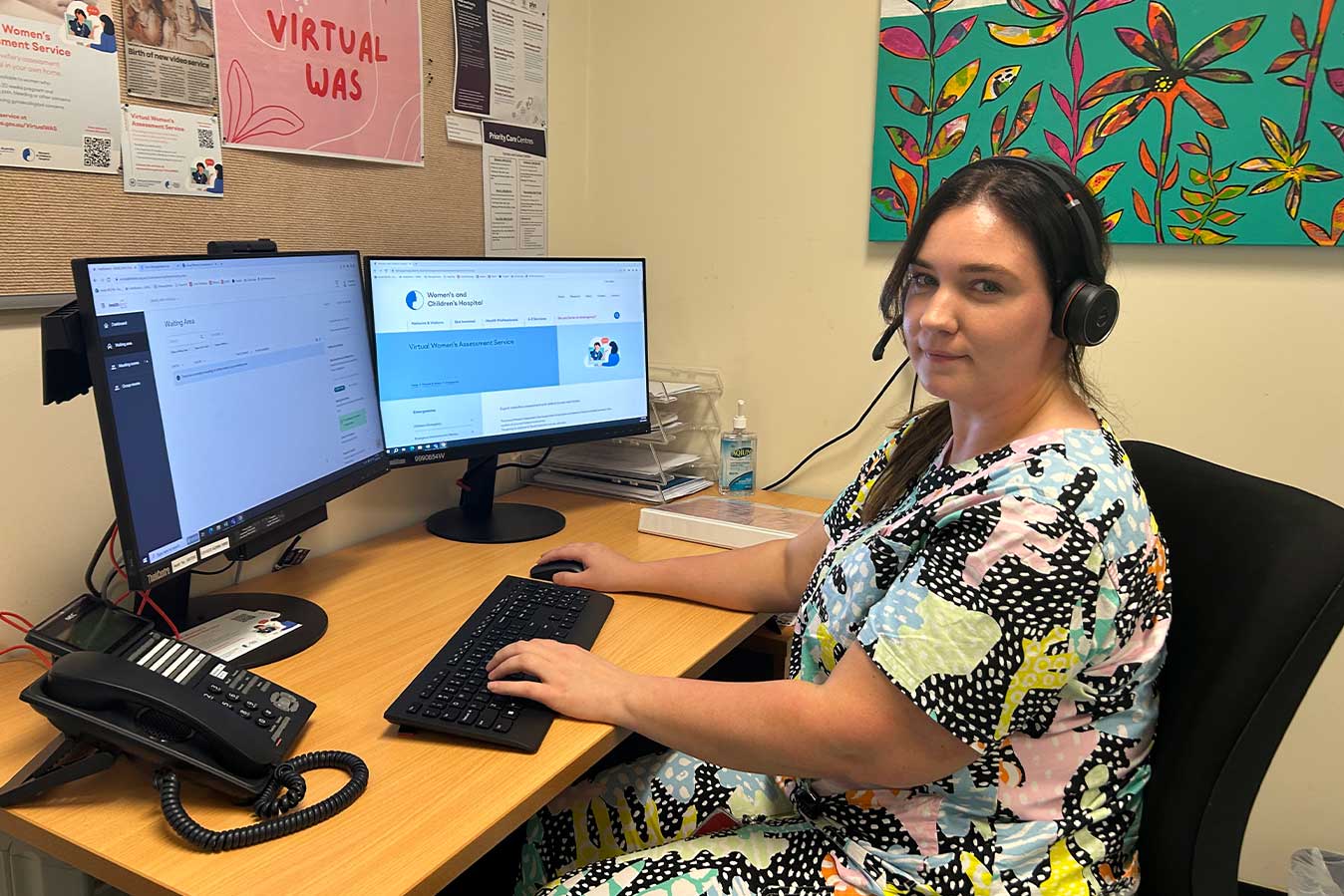Women in South Australia who are showing signs of early pregnancy loss can now conveniently access vital midwifery-led care and support through video consultations from the comfort and privacy of their own homes.
The new virtual Women’s Assessment Service, run by the Women’s and Children’s Health Network (WCHN), enables women across the state experiencing symptoms such as pain or bleeding in early pregnancy, or other gynaecological concerns, to tap into care from an experienced midwife virtually instead of needing to present and wait in emergency departments during such a vulnerable time.
Funded by the state government, the virtual service, launched in September for a 12-month pilot following a successful trial. It is available seven days a week to women who are less than 20 weeks pregnant and experiencing symptoms of pregnancy loss, pregnant and suffering nausea and vomiting, or grappling with gynaecological issues.
According to Acting Midwifery Unit Manager of the service, Charlotte Groves, the initial trial, modelled on the hospital’s successful WCHN Child and Adolescent Virtual Urgent Care Service (CAVUCS), found most women preferred to use a virtual service rather than presenting to hospital.
“During that time, we mainly had women who had called our triage midwife, and we would refer them to a virtual midwife to have a discussion with, a video conference consultation, to find out if they needed any tests or investigations for their concerns,” Charlotte explains.
“We received really positive feedback from the women that used the service around the reduced waiting times, the fact that they could do this from the comfort of their own homes, and that instead of a telephone call, they got to see a midwife one-on-one, which made a big difference, especially when talking about some really sensitive topics.”
Pregnant women across South Australia, especially regional and rural areas, now have the opportunity to access virtual care from skilled midwives. In its first month, the service provided consultations to 64 women, including an additional 145 follow-up phone calls for check-ins and care evaluations.
Charlotte says the enhanced and more streamlined care isn’t just benefiting pregnant women; it’s also empowering midwives within the service, enabling them to increase their scope of practice and deliver greater continuity-of-care.
It was among the primary motivations for Clinical Midwife Olivia Weymouth joining the team.
“It’s really rewarding work to be able to provide women with a level of care that they expect, in a model of care that suits them,” says Olivia.
“It works for us as well, it enables us to provide care to these women in an appropriate setting that is sensitive to their physical and emotional needs. Sometimes this means, they can avoid presenting to Women’s Assessment Service, or an alternative Emergency Department, all together.”
Olivia says women typically find out about the service through the Women’s and Children’s Hospital website or referrals from other health practitioners. After filling out an online questionnaire, they move along to a virtual waiting room, before connecting virtually with a midwife face-to-face.
Assessment involves gathering essential information about the pregnancy, identifying any concerning symptoms that women may be experiencing, and reviewing any previous medical tests or examinations they may have undergone.
The next steps include identifying the need for further investigations, and where required, referrals to other services including, obstetricians or gynaecologists, or more community based care such as GP’s and pharmacists.
While the consultations are virtual, Olivia says midwives still have the ability to physically see patients, meaning they can assess things like their respiratory rate, temperature, and even heartrate, if they own a Smart Watch.
“From a patient perspective, it’s expediting their care,” suggests Olivia.
“We’re significantly reducing wait times. It’s about 69 minutes from the moment they log on to the virtual call, to the moment it ends. For some patients, that might be their average travel time to get to us. If you compare a patient who accesses the virtual service to coming in physically, some patients are just arriving at the hospital by the time we’ve seen them [virtually], assessed them, counselled them, and provided a follow-up plan.”
Above all, Olivia believes the virtual service’s capacity to offer continuity-of-midwifery-care from a familiar midwife during the challenging period of pregnancy loss is what truly sets it apart.
“It’s part of the reason the service came about, because we’re aiming to provide more sensitive care to women in a way that they want it,” she says.
“Providing that care, it’s never easy, but I have confidence in my clinical skills and knowledge to be able to provide comprehensive and informative care to women experiencing pregnancy loss. And that confidence in knowledge can be really reassuring to women.
“They want somebody who’s a specialist in that area to be able to tell them what’s happening and provide them with appropriate counselling and support. While it’s not easy work, it’s very rewarding to be able to provide high-level of care to women and the right information and supports they need.”
While the virtual service is still a relatively new option for women, Charlotte says expansion is already in the pipeline.
“Down the track, we’re hoping to look at how our midwives are getting accredited to do ultrasound scanning themselves, which will again, reduce waiting times for women. We’re also looking at where else we can move into, such as postnatal breastfeeding assistance, support for pregnant women post 20 weeks, and connecting with GPs to promote the service better.”
The new service is available between 8am to 4pm, 7 days per week, and can be accessed here








